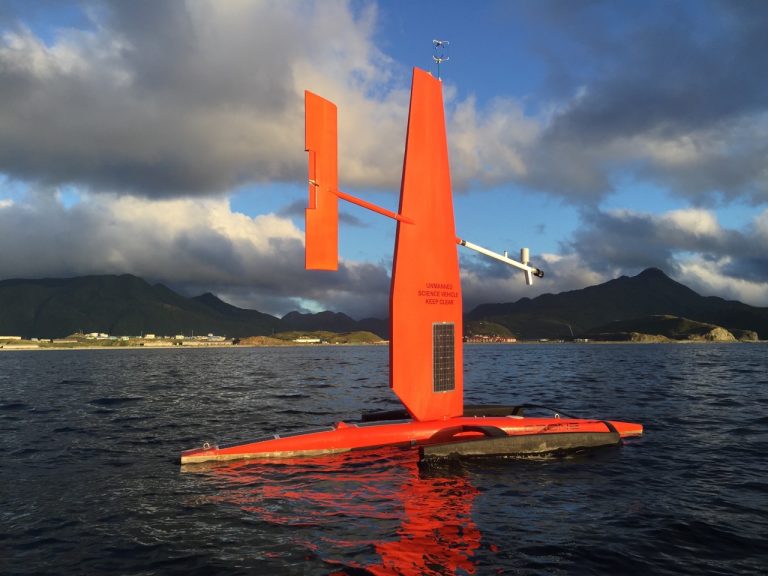Arctic Saildrone
The Arctic Saildrone is a wind-powered, unmanned surface water vehicle able to reach remote and harsh environments in the Arctic to collect important atmospheric and oceanic data. The Saildrone is a product supported by the Arctic Research Program at NOAA’s Global Ocean Monitoring and Observing Program, NOAA’s Pacific Marine Environmental Lab (PMEL), and Saildrone, Inc. This highly innovative platform relies on wind for propulsion and solar panels to power cutting-edge electronics that collect data autonomously for months at a time. The use of Saildrones will complement and support the limited manned research cruises in the Arctic to greatly increase domain awareness and enhance the collection of critical data in a rapidly changing environment.
The Arctic Saildrone is a behemoth in the world of ocean gliders. At 20 feet high and 19 feet long it has the ability to operate at 3-5 knots, depending on wind conditions. The size of the Saildrone gives it an immense capacity for instrumentation, with the ability to carry up to 250lbs of environmental intelligence gathering equipment. Given these capabilities, the Arctic SailDrone can collect roughly 2 million measurements per day, including wind speed, air temperature, solar irradiance, chlorophyll concentration, dissolved oxygen concentration, water temperature, salinity as well as carbon dioxide in the air and water and pH, which are critical for constraining ocean acidification. The data are transmitted via satellite and is available in near-real time to both researchers and the public (PMEL website). The Saildrone is piloted remotely from Seattle and because the data is collected in near real-time, scientists can investigate ocean and atmospheric features and phenomena as they occur, making the observing programs highly adaptable and responsive.
In 2016, several Saildrones were deployed in the Bering Sea for a three-month deployment that included monitoring the seasonal break-up of ice on the Yukon River and measuring oceanographic conditions and marine mammal movement across the region. The mission in 2017 will mark the first time that the Saildrones will move north through the Bering Strait and into the Arctic Ocean, which marks an exciting turning point in the collection of Arctic atmospheric and oceanic data.
The Saildrone program is a collaborative effort between multiple NOAA offices as well as universities and private organizations. As part of the Innovative Technology for Arctic Exploration (ITAE) program, it is a joint effort between engineers and scientists in the Cooperative Institute for Climate, Ocean and Ecosystem Studies (CICOES) and at NOAA’s PMEL. The program resulted from the creation of the autonomous vehicle by Saildrone, Inc., which was first built in 2012.
The Arctic Research Program in NOAA’s Global Ocean Monitoring and Observing Program, in a continuing partnership with PMEL, plans to conduct annual surveys of the Arctic using the Saildrones to support science programs such as the Distributed Biological Observatory and the Year of Polar Prediction.
